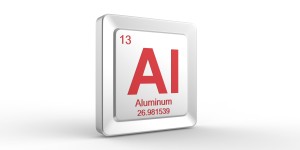
Think you know aluminum collision repair? Try this quiz
By onEducation | Repair Operations | Technology
The aluminum F-150, which set off a flurry of activity in both the automotive and collision repair industries, is now at what Ford calls “full production,” and soon will be at “full availability” at dealerships and filling more fleet orders.
With that in mind as well as its recent prominence in Audi’s new A4, Chevy’s potshots at Ford, and our own “great materials debate” between the Aluminum Association and Steel Market Development Institute, it seems like a good time to help shops check their skills.
To do so, we’re reprinting the aluminum quiz presented at the April Collision Industry Conference by Society of Collision Repair Education Committee members Toby Chess and Kye Yeung.
How well do you and your co-workers know the metal? Try this quiz and find out. Answers are in a separate post.
1. Technician A states that aluminum oxide protects the aluminum from corroding.
Technician B states that weld thru primer is needed when welding aluminum. Who is correct?
A. Only Technician A
B. Only Technician B
C. Both Technicians A & B
D. Neither Technician A & B
2. The major alloying element is series 5 aluminum is silicon
A. True
B. False
3. Technician A states that 100 percent argon with a 4.6 purity is used for welding aluminum.
Technician B states that the weld puddle can be pushed or pulled when welding aluminum. Who is correct?
A. Only Technician A
B. Only Technician B
C. Both Technicians A & B
D. Neither Technician A & B
4. Technician A states the annealing is the process of heating heat treatable aluminum to add strength.
Technician B states annealing takes place at temperatures above 600 degrees Fahrenheit. Who is correct?
A. Only Technician A
B. Only Technician B
C. Both Technicians A & B
D. Neither Technician A & B
5. Technician A states that SPR’s (self-piercing rivets) use a 6.5 mm pilot hole.
Technician B states that SPRs are high-strength steel coated with tin to prevent galvanic corrosion. Who is correct?
A. Only Technician A
B. Only Technician B
C. Both Technicians A & B
D. Neither Technician A & B
6. Technician A states the aluminum dust can be explosive.
Technician B states that aluminum dust is a carcinogen. Who is correct?
A. Only Technician A
B. Only Technician B
C. Both Technicians A & B
D. Neither Technician A & B
7. Technician A states that aluminum has very little memory.
Technician B states that aluminum is 30 percent stronger compared to the same weight of steel. Who is correct?
A. Only Technician A
B. Only Technician B
C. Both Technicians A & B
D. Neither Technician A & B
8. An aluminum door on a Range Rover is damaged, and weld-on pins are used to pull out the dent.
Technician A states that if the aluminum is stretched, a heat gun, induction heated or butane torch can be used to heat the aluminum followed by rapid cooling (water) to shrink the aluminum.
Technician B states that dye penetrant is used only for checking cracks in welds. Who is correct?
A. Only Technician A
B. Only Technician B
C. Both Technicians A & B
D. Neither Technician A & B
9. Technician A states that a Hemlock Rivet can be used to replace an SPR.
Technician B states that a Hemlock Rivet needs access to the back of the panel. Who is correct?
A. Only Technician A
B. Only Technician B
C. Both Technicians A & B
D. Neither Technician A & B
10. Technician A states that aluminum melts at 1220 Fahrenheit.
Technician B states that aluminum does not change colors when it melts. Who is correct?
A. Only Technician A
B. Only Technician B
C. Both Technicians A & B
D. Neither Technician A & B
11. Estimator A says that heat-treatable alloys may be repaired using heat.
Estimator B says that non-heat-treatable alloys may be repaired using heat. Who is correct?
A. Only Technician A
B. Only Technician B
C. Both Technicians A & B
D. Neither Technician A & B
12. The suffix following the alloy number represents:
A. If the alloy can be welded
B. The thickness of the metal
C. The temper or the hardness of the alloy
D. What element is added during the alloy process
13. Which of these would be applied to a repaired aluminum panel prior to the application of body filler?
A. Primer surfacer
B. Adhesion promoter
C. Self etching primer
D. Epoxy primer
14. Annealing causes aluminum alloys to:
A. Permanently harden
B. Temporarily harden
C. Permanently soften
D. Temporarily soften
Featured image: Aluminum is No. 13 on the periodic table. (Hreni/iStock/Thinkstock)
